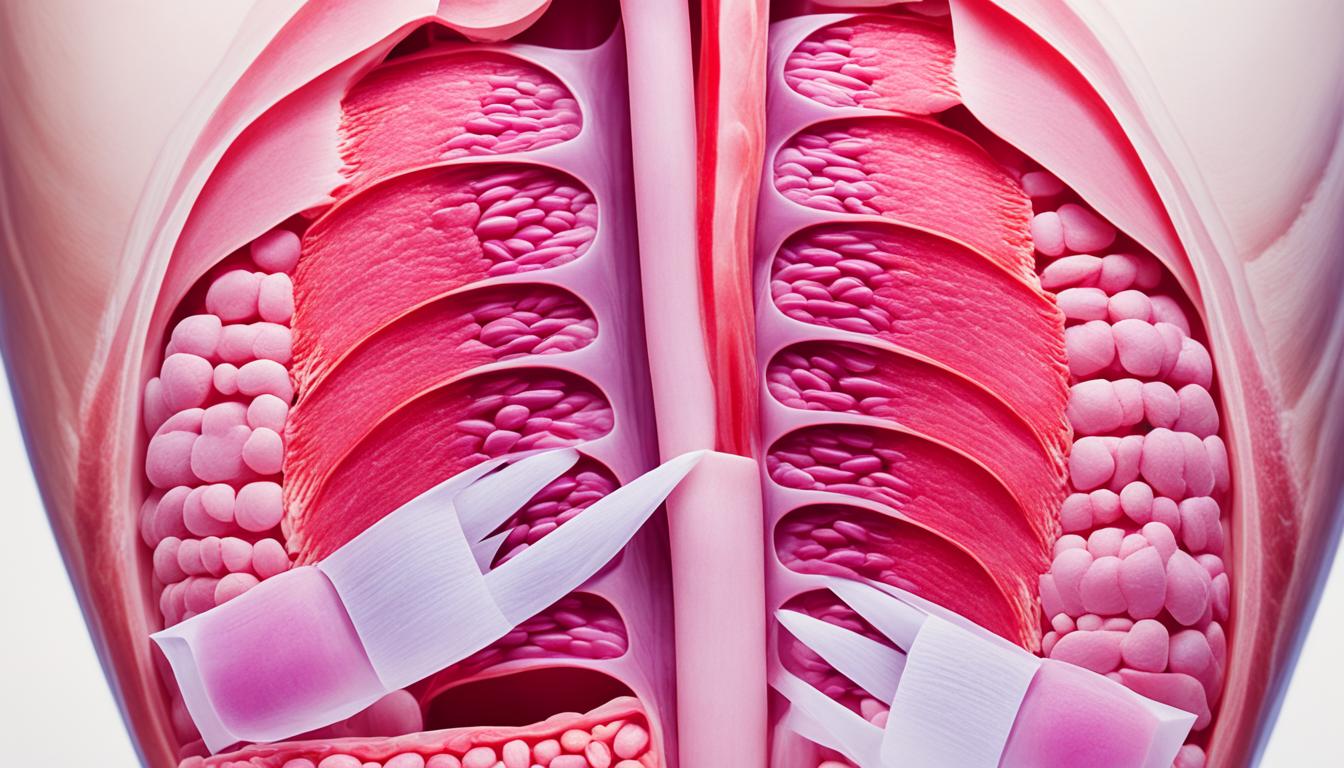Esophageal achalasia is rare and affects the way the esophagus moves. It’s hard for the lower esophageal sphincter to relax when swallowing. As a result, people find it hard to swallow (dysphagia), might spit food back (regurgitation), and lose weight. The cause is a mix of genetic, immune, and breakdown of nerve cells.
Achalasia impacts all ages but is often seen between 30 and 60 years old. Its symptoms are tough and can lower life quality. Early diagnosis and looking into treatments are key to living with it.
To diagnose achalasia, doctors look at symptoms, do tests like X-rays, direct look (esophagoscopy), and a pressure check (manometry) in the esophagus. This confirms if the esophagus can’t push food down properly and the LES doesn’t open enough. They rule out other causes to pick the right treatment.
Treatments include using a balloon to stretch the LES (pneumatic dilation), cutting the LES muscle (Heller myotomy), or doing a cut from inside the esophagus (POEM). They aim to make it easier for food to go down.
Key Takeaways:
- Esophageal achalasia is rare and makes it hard for the lower esophageal sphincter to relax when swallowing.
- It causes trouble swallowing, food spit back, and weight loss.
- Diagnosis needs tests like X-rays, direct look (esophagoscopy), and a pressure check (manometry).
- Treatments include pneumatic dilation, LES muscle cut (Heller myotomy), or POEM.
- Early diagnosis and finding the right treatment are crucial for managing achalasia well.
Epidemiology and Etiology of Esophageal Achalasia
Esophageal achalasia is a rare condition. It affects men and women equally. The most common age range is from 30 to 60. The incidence is between 1 to 10 cases per 100,000 people. It is believed to be present in 10 in 10,000 individuals.
The cause of achalasia is not fully understood. However, several theories try to explain it. These include:
- Genetic theory: Some cases of achalasia might run in families. The connection between specific genes and achalasia is not clear. But, it suggests genes might play a role.
- Infection theory: Viral or bacterial infections could lead to achalasia. These infections might cause the immune system to act against the esophagus. This can affect the lower esophageal sphincter.
- Autoimmune theory: In some cases, achalasia is seen as an autoimmune condition. Here, the body mistakenly attacks the esophagus. This attack can make the lower esophageal sphincter not work properly.
- Degenerative theory: The degenerative theory suggests achalasia could be part of the aging process. This natural process might affect the lower esophageal sphincter.
Epidemiological Data on Esophageal Achalasia
The incidence rate of esophageal achalasia is between 1 to 10 cases for every 100,000 people. Its prevalence is around 10 cases in 10,000 individuals.
Diagnosis and Treatment of Esophageal Achalasia
Diagnosing esophageal achalasia needs a full checkup. This includes looking at symptoms, using X-rays, and tests like esophagoscopy and manometry. These tests help doctors understand how the esophagus is working. A barium swallow shows a bigger esophagus and slow motion of food. High-resolution manometry looks at how well muscles move in the esophagus and if the lower sphincter relaxes as it should.
Esophagoscopy checks for blockages or reasons for trouble swallowing. It lets doctors look closely at the esophagus. They can spot and sometimes fix issues.
Several ways help treat esophageal achalasia. There’s pneumatic dilation, Heller myotomy surgery, and POEM. Pneumatic dilation uses a balloon to open the LES, easing food movement. Heller myotomy surgery cuts the LES muscle to help food pass through. POEM is a less invasive surgery. It makes a path inside the esophagus for food to move better.
Which treatment is best depends on things like how bad the symptoms are and the patient’s health. Doctors discuss options with the patient. Then they choose what’s best for them.

